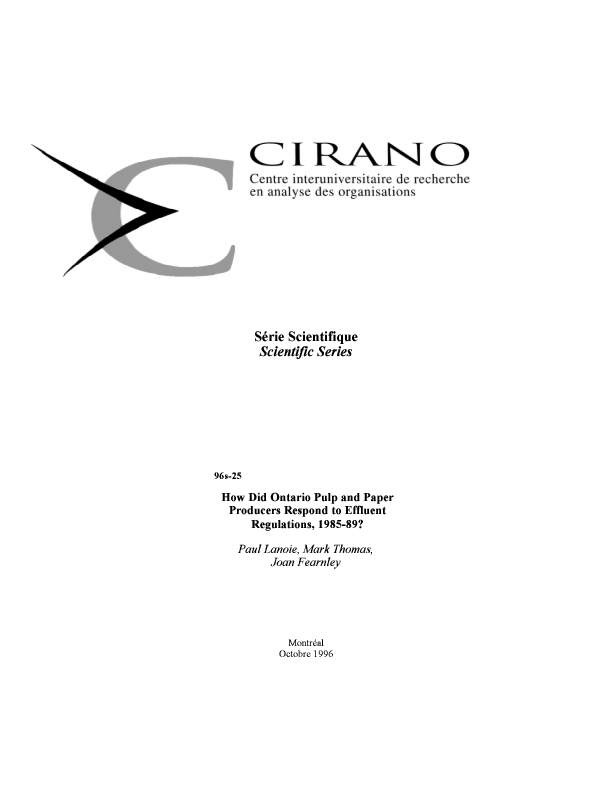How Did Ontario Pulp and Paper Producers Respond to Effluent Regulations, 1985-89?
This paper explores the effects of effluent regulatory activity on firm behavior in the pulp and paper industry in Ontario. The model uses instrumental variables to attempt to distinguish between that correlation between emission limits and emissions coming from regulatory capture and that coming from true influence on the part of the regulator. The model also attempts to identify the response channels on the part of the firms: data are available on reported investments in abatement capital and on firms' water consumption, correlated with output. Estimation results suggest that total suspended solids (TSS) limits were more effective than biological oxygen demand (BOD) limits in controlling emissions. Firm responses to TSS limits were in part through modulating output and these responses lowered emissions. In contrast, firms reported investing in abatement technology in response to reductions in BOD limits, but these reported investments had no discernible impact on emissions. Firm responses to court summons, fines, and inquiries were impossible to detect. Possible causes of these results are that penalties for effluent discharge infractions in Ontario during the period studied were too light to influence firm behavior measurably, and that emission limits are set high enough not to be binding for most firms in the sample.
[ - ]




